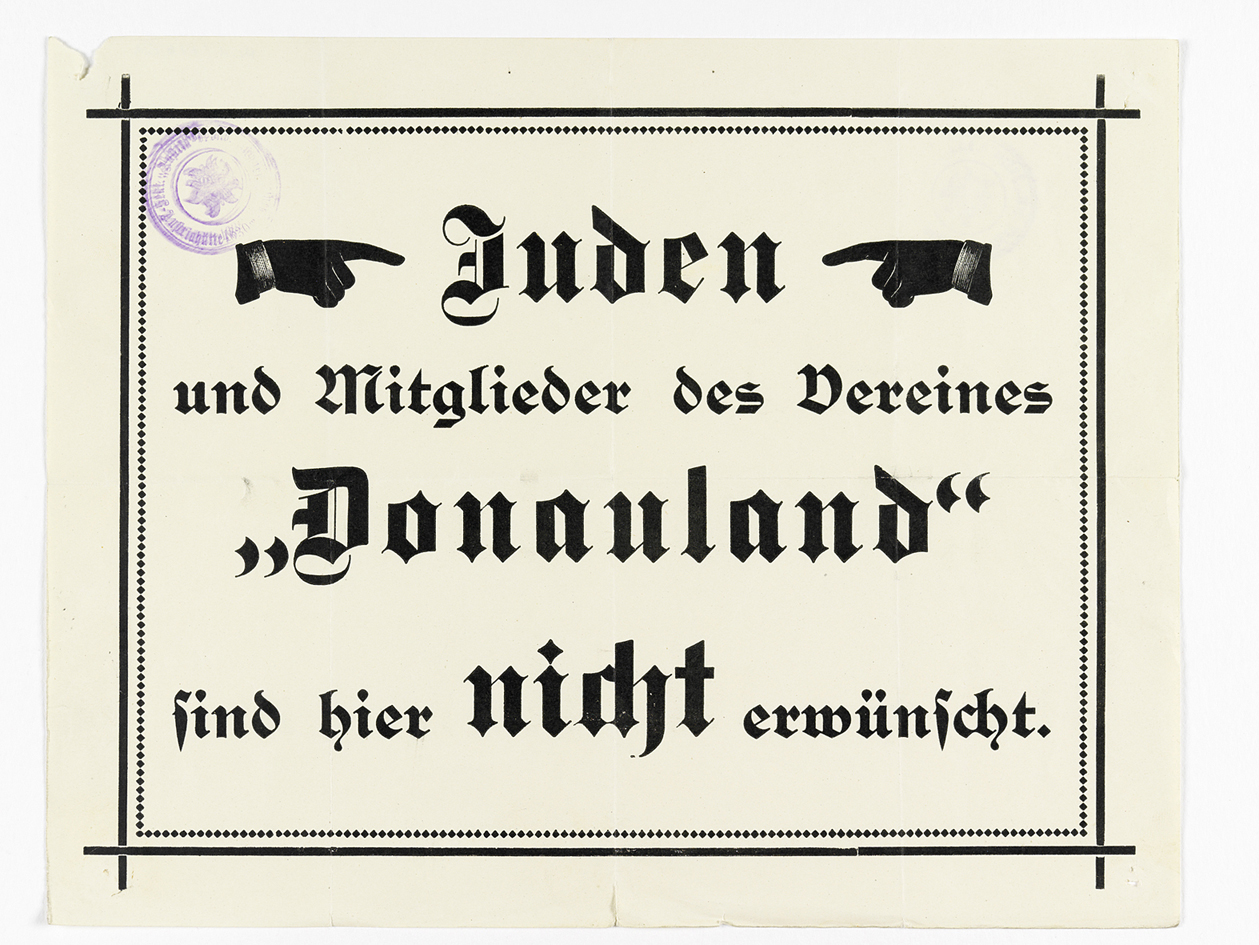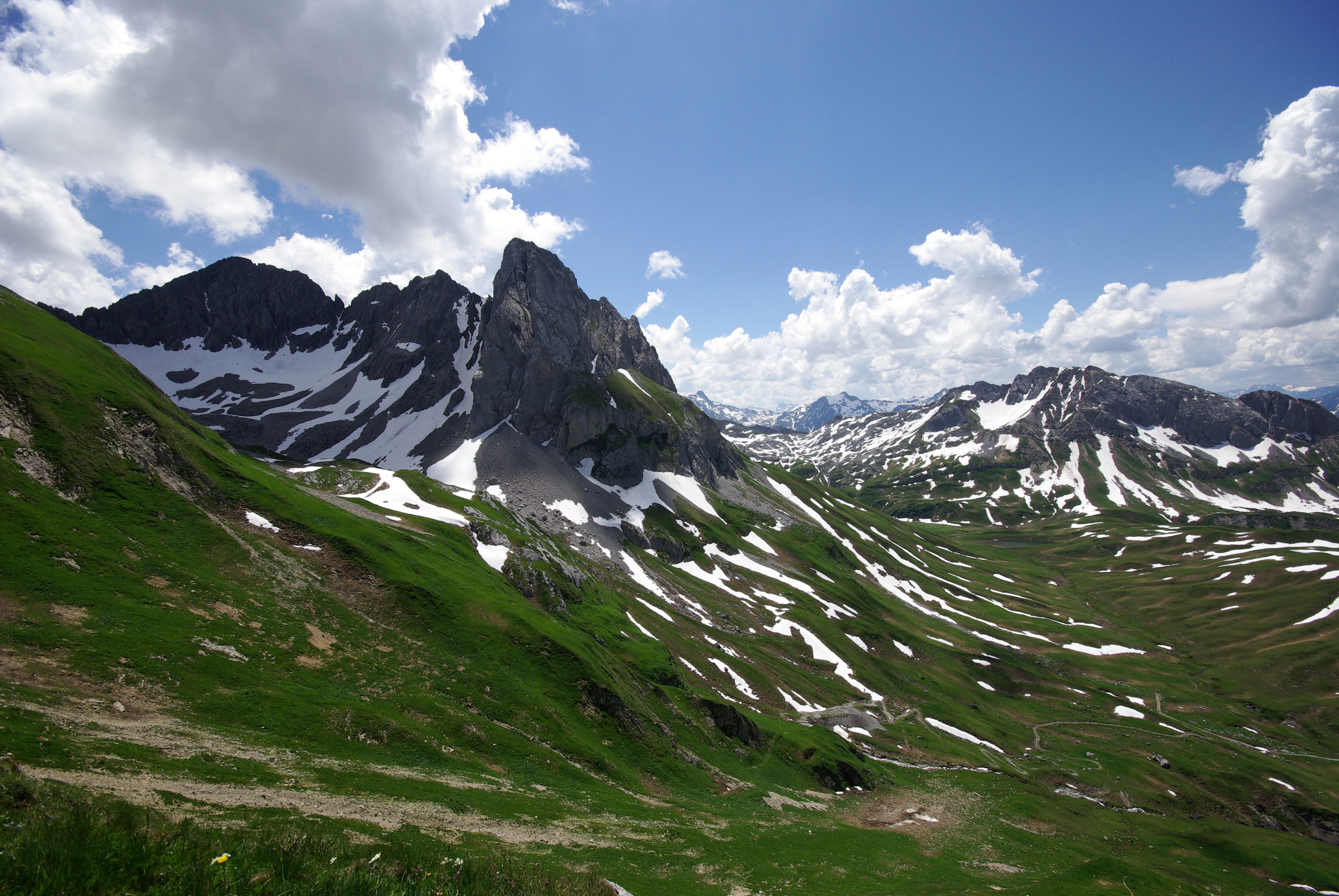|
Ravensburger Hut
The Ravensburger Hut (german: Ravensburger Hütte) is an Alpine Club hut belonging to the Ravensburg branch of the German Alpine Club (DAV). It lies in the Lechquellen Mountains at the foot of the Spuller Schafberg (near the Arlberg Pass). History The Ravensburger Hut was built in 1912, extended 1958/59, modernised in 1974/76 and in 1988/89 a sewage treatment facility was installed. Ascent * From Zug via the Stierlochjoch: signed, good path, steep to begin with, later gentler. From Stierlochjoch down to the hut. Bathed in sunshine in the morning, shady in the evening, 1½ to 2 hours, from Lech to Zug on an easy route another 30 minutes. * From Klösterle / Langen via the Spuller See: ideal for railway travellers, signed, both paths merged about 45 minutes. The path from Klösterle is steeper, but is shaded in the morning. 2 to 2½ hours. * From Spullersee: drive to the northern dam of the Spullersee (drive ca. 30 minutes on a toll road, someti ... [...More Info...] [...Related Items...] OR: [Wikipedia] [Google] [Baidu] |
Vorarlberg
Vorarlberg ( , ; gsw, label=Vorarlbergisch, Vorarlbearg, , or ) is the westernmost States of Austria, state () of Austria. It has the second-smallest geographical area after Vienna and, although it also has the second-smallest population, it is the state with the second-highest population density (also after Vienna). It borders three countries: Germany (Bavaria and Baden-Württemberg via Lake Constance), Switzerland (Grisons and Canton of St. Gallen, St. Gallen), and Liechtenstein. The only Austrian state that shares a border with Vorarlberg is Tyrol (state), Tyrol, to the east. The capital of Vorarlberg is Bregenz (29,698 inhabitants), although Dornbirn (49,845 inhabitants) and Feldkirch, Vorarlberg, Feldkirch (34,192 inhabitants) have List of cities and towns in Austria, larger populations. Vorarlberg is also the only state in Austria in which the local dialect is not Austro-Bavarian dialects, Austro-Bavarian, but rather an Alemannic dialects, Alemannic dialect; it therefore ha ... [...More Info...] [...Related Items...] OR: [Wikipedia] [Google] [Baidu] |
Deutscher Alpenverein
The German Alpine Club (german: links=no, Deutscher Alpenverein, DAV for short) is the world's largest climbing association and the eighth-largest sporting association in Germany. It is a member of the German Olympic Sports Confederation and the competent body for sport and competition climbing, hiking, mountaineering, hill walking, ice climbing, mountain expeditions, as well as ski mountaineering. It is an association made up of local branches known as 'sections'. History The German Alpine Club was founded as on 9 May 1869 in Munich by 36 former members of the Austrian Alpine Club around the Ötztal curate Franz Senn. It was founded in order to promote the development of tourism in the Eastern Alps through the building of mountain huts, and establishment of hiking trails, and via ferratas. The association had a large membership from the beginning, attracting 1,070 members in the first ten months. The German and the Austrian societies merged in 1873 to form the German and Aus ... [...More Info...] [...Related Items...] OR: [Wikipedia] [Google] [Baidu] |
Section (Alpine Club)
The section (german: Sektion) of an Alpine club (or that of any such Alpine society or association) is an independent club or society that, together with the other sections, forms the main organisation ("Alpine club"). Membership of an Alpine club is normally only possible through membership of a section. The task of an Alpine club section is the maintenance of tradition and culture, the Alpine training of its members, the planning and implementation of mountain tours and expeditions, and also the maintenance of huts and trails in the mountains. Many sections own Alpine club huts. After the initial task of the Alpine clubs - i.e. the development of the Alps for tourism and Alpinism, was considered as largely completed in Central Europe today, the work of the sections moved increasingly into the service sector, including the organization of Alpine courses and tours as well as sponsoring climbing gyms. *The German Alpine Club consists of 354 legally independent sections with a total ... [...More Info...] [...Related Items...] OR: [Wikipedia] [Google] [Baidu] |
Ravensburg
Ravensburg ( Swabian: ''Raveschburg'') is a city in Upper Swabia in Southern Germany, capital of the district of Ravensburg, Baden-Württemberg. Ravensburg was first mentioned in 1088. In the Middle Ages, it was an Imperial Free City and an important trading centre. The "Great Ravensburg Trading Society" (''Große Ravensburger Handelsgesellschaft'') owned shops and trading companies all over Europe. The historic city centre is still very much intact, including three city gates and over 10 towers of the medieval fortification. "The all-white Mehlsack (Flour sack) is a tower marking the Altstadt’s southern edge. A steep staircase leads up to the Veitsburg, a quaint baroque castle." History Ravensburg was first mentioned in writing in 1088. It was founded by the Welfs, a Frankish dynasty in Swabia who became later Dukes of Bavaria and Saxony and who made the castle of Ravensburg their ancestral seat. By a contract of inheritance, in 1191 the Hohenstaufen Frederick Barbarossa acq ... [...More Info...] [...Related Items...] OR: [Wikipedia] [Google] [Baidu] |
Alpine Club Hut
Alpine club huts (german: Alpenvereinshütten) or simply club huts (''Clubhütten'') form the majority of the over 1,300 mountain huts in the Alps and are maintained by branches, or sections, of the various Alpine clubs. Although the usual English translation of ''Hütte'' is "hut", most of them are substantial buildings designed to accommodate and feed significant numbers of hikers and climbers and to withstand harsh high alpine conditions for decades. Purpose and facilities They provide hikers and climbers with accommodation and shelter, mainly in the Alpine region. The greater number of these huts are managed, several are only suitable for those able to be self-contained. Although fundamentally all those involved in mountain activities have access to the huts, preferential service is given to members of the Alpine clubs. These include: reduced accommodation rates, mountaineer's meals, hot water for tea, the right to provide one's own food and alcohol-free drink (sometimes for a ... [...More Info...] [...Related Items...] OR: [Wikipedia] [Google] [Baidu] |
German Alpine Club
The German Alpine Club (german: links=no, Deutscher Alpenverein, DAV for short) is the world's largest climbing association and the eighth-largest sporting association in Germany. It is a member of the German Olympic Sports Confederation and the competent body for sport and competition climbing, hiking, mountaineering, hill walking, ice climbing, mountain expeditions, as well as ski mountaineering. It is an association made up of local branches known as 'sections'. History The German Alpine Club was founded as on 9 May 1869 in Munich by 36 former members of the Austrian Alpine Club around the Ötztal curate Franz Senn. It was founded in order to promote the development of tourism in the Eastern Alps through the building of mountain huts, and establishment of hiking trails, and via ferratas. The association had a large membership from the beginning, attracting 1,070 members in the first ten months. The German and the Austrian societies merged in 1873 to form the German and A ... [...More Info...] [...Related Items...] OR: [Wikipedia] [Google] [Baidu] |
Lechquellen Mountains
The Lechquellen Mountains (german: Lechquellengebirge) or Lechquellen range is a small mountain group within the Northern Limestone Alps of the Eastern Alps. It lies entirely within the Austrian state of Vorarlberg and includes the upper reaches of the river Lech with its headstreams in a horseshoe shape as well as the Upper Großwalsertal valley. Origin of the name The name ''Lechquellengebirge'' (literally "Lech source mountains") is certainly accurate, for the greater part of the mountain range surrounds the upper reaches of the Lech with its two spring-fed streams, the Formarinbach and the Spullerbach. Nevertheless, it is in fact an artificial name made up by Walther Flaig at a time when the development of mountaineering in the Alps had been largely completed. Previously, the mountain range had been called either the Klostertal Alps or counted as part of the Lechtal Alps east of the Flexen Pass. Artificial names often find it hard to establish themselves in everyday ... [...More Info...] [...Related Items...] OR: [Wikipedia] [Google] [Baidu] |
Arlberg Pass
Arlberg () is a massif between Vorarlberg and Tyrol in Austria. The highest peak is the Valluga at . The name ''Arlberg'' derives from the tradition of the "Arlenburg", who are said to have once established themselves on the Tyrolean side of the Arlberg passes (1,793 m above sea level). Another story derives the name from the "Arlenbushes" that are very numerous there. Ski resorts at the Arlberg include Lech, Zürs, Stuben, St. Christoph, St. Anton, Oberlech, Stubenbach, Zug, Warth The name of the state of Vorarlberg is derived from the mountain Arlberg, which is located in front of the Arlberg, from the point of view of the Holy Roman Empire as well as the Swiss Confederation and the castle of the Habsburgs. Geography The Arlberg connects the Klostertal Valley in the west with the Stanzer Valley in the east. Together with the Flexenpass, it borders three mountain groups: the Verwall in the south, the Lechquellen mountains in the northwest, and the Lechtal Alps in the nor ... [...More Info...] [...Related Items...] OR: [Wikipedia] [Google] [Baidu] |
Freiburger Hütte
{{disambig ...
Freiburger usually refers to the city Freiburg im Breisgau in Germany or a person or thing from there. Examples include: *Freiburger FC, a football team (Soccer) * Freiburger Barockorchester, an orchestra *Freiburger Münster ( Freiburg Minster), a cathedral *Freiburger Pilsner, a beer produced by Ganter Brewery Freiburger can also mean: * Mark Freiburger, an American film director * Vern Freiburger, a Major League Baseball player *Freiburger, a synonym for the German wine grape Freisamer See also *Freiburg (other) Freiburg can refer to: *Freiburg im Breisgau, a large city in Baden-Württemberg, Germany ** University of Freiburg (''Albert-Ludwigs-Universität Freiburg''), an institution of higher learning founded in 1457 in Freiburg im Breisgau ** Freiburg ( ... [...More Info...] [...Related Items...] OR: [Wikipedia] [Google] [Baidu] |




.jpeg/1200px-Sonnenkopf_Ski_Arlberg_(203037195).jpeg)